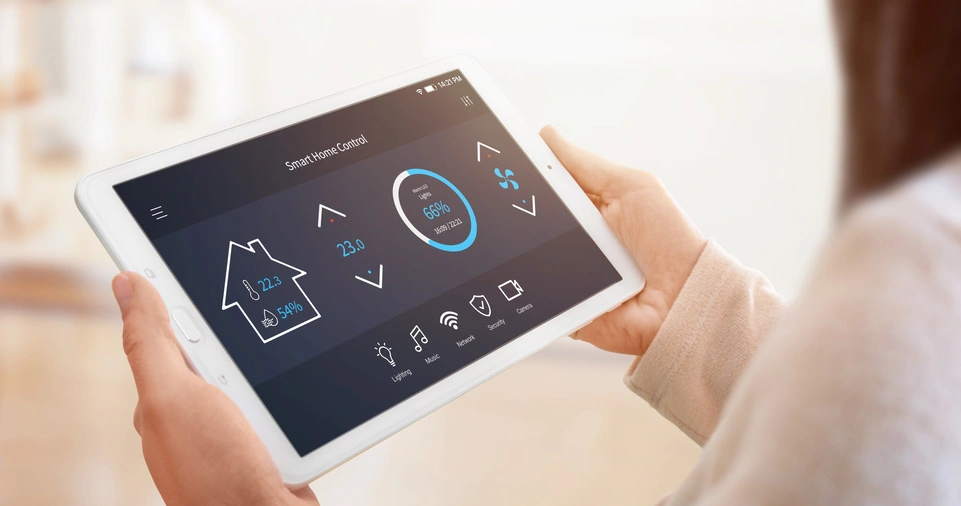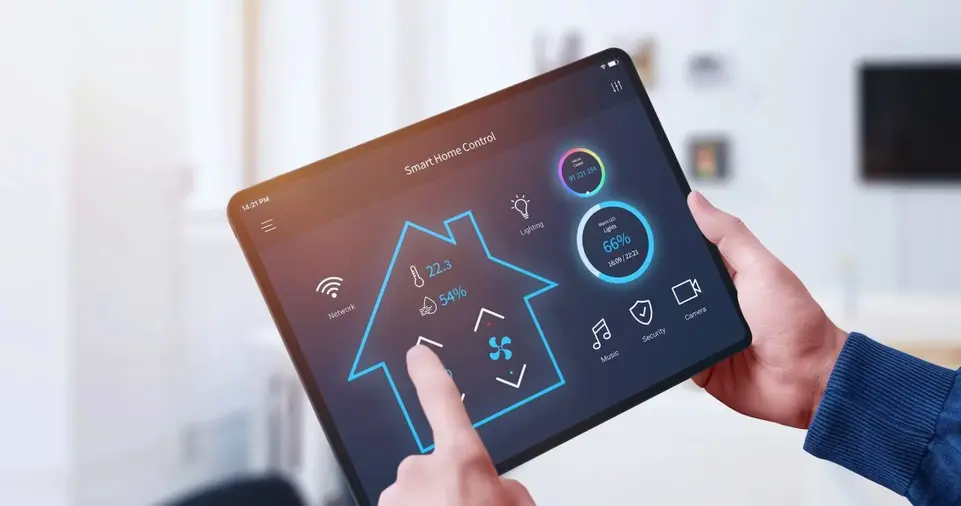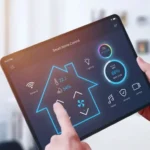Smart home technology is revolutionizing the way we live, offering convenience, security, and, most importantly, energy efficiency.
With rising energy costs and growing environmental concerns, optimizing energy consumption has become a priority for many households.
Smart home devices are not just about comfort; they’re powerful tools for reducing energy waste and cutting down utility bills.
By intelligently managing heating, cooling, lighting, and appliances, these devices enable you to maintain a comfortable living environment while using resources wisely.
This guide explores how smart home devices can help increase energy efficiency.
It covers everything from smart thermostats and lighting systems to power strips and appliances, providing actionable tips and insights.
By the end, you’ll have a comprehensive understanding of how to implement smart technology to make your home greener and your energy bills lighter.
Whether you’re just starting with smart devices or looking to expand your setup, this article has you covered.
Benefits of Smart Home Devices for Energy Efficiency
Convenience and Automation
Smart home devices offer unparalleled convenience by automating everyday tasks.
Devices like thermostats, lights, and plugs can be programmed to operate based on schedules or real-time conditions, reducing the need for manual intervention.
Real-Time Monitoring
Energy-monitoring devices allow you to track energy usage in real-time, giving you insights into which appliances consume the most power.
This data can help you make informed decisions to optimize energy use.
Cost Savings
By reducing unnecessary energy consumption, smart home devices can significantly lower your utility bills.
Features like scheduling and remote control ensure energy is used only when needed.
Environmental Impact
Using smart technology promotes sustainability.
Reducing energy waste decreases your carbon footprint, contributing to global efforts to combat climate change.
ALSO READ: How to Build a Resilient Business in the Face of Economic Challenges
Smart Home Devices And How to Use Them

Smart Thermostats: Optimizing Climate Control
How They Work
Smart thermostats are intelligent devices that learn your temperature preferences and adjust heating or cooling systems accordingly.
They can be controlled remotely via smartphone apps and often integrate with voice assistants like Alexa or Google Assistant.
Energy-Saving Features
- Geofencing: Automatically adjusts the temperature when you leave or return home.
- Scheduling: Set specific times for heating or cooling to turn on or off.
- Adaptive Learning: Some models learn your habits and preferences, optimizing settings without manual input.
Tips for Maximum Efficiency
- Set your thermostat to energy-saving temperatures when you’re asleep or away. For instance, lower the temperature by 7-10 degrees Fahrenheit in winter.
- Use geofencing to ensure your system operates only when needed.
- Regularly clean and maintain HVAC systems to ensure they operate efficiently.
Smart Lighting: Illuminating Efficiency
Why Smart Lighting Matters
Lighting accounts for a significant portion of household energy consumption.
Smart lighting systems reduce waste by allowing precise control over when and how lights are used.
Features of Smart Lighting
- Remote Control: Turn lights on or off using your smartphone.
- Dimming Options: Adjust brightness levels to reduce energy usage.
- Motion Sensors: Automatically turn lights off when a room is unoccupied.
Tips for Energy Efficiency
- Replace incandescent bulbs with energy-efficient LED smart bulbs.
- Use schedules to ensure outdoor lights turn off during daylight hours.
- Group lights by room or activity to manage them efficiently.
Smart Power Strips: Eliminating Standby Power Waste
The Issue with Standby Power
Many devices continue to draw power even when they’re turned off.
This “phantom energy” can account for up to 10% of household electricity use.
How Smart Power Strips Help
Smart power strips detect when devices are in standby mode and cut power automatically. Some models also allow scheduling or remote control via apps.
Usage Tips
- Connect entertainment systems or gaming consoles to a smart strip to avoid standby energy waste.
- Use scheduling features for devices that don’t need to be on 24/7, like printers or speakers.
- Place power strips in easily accessible locations for convenience.
Smart Plugs: Versatile Energy Management
What Are Smart Plugs?
Smart plugs turn ordinary appliances into smart devices. By plugging an appliance into a smart plug, you gain remote control and scheduling capabilities.
Energy-Saving Applications
- Control high-energy devices like space heaters or dehumidifiers.
- Schedule appliances like coffee makers to operate only when needed.
- Monitor energy consumption for individual devices.
Best Practices
- Use smart plugs for devices you frequently forget to turn off.
- Monitor energy usage patterns through the app to identify energy-hungry appliances.
Energy-Monitoring Devices: Understanding Consumption
Why Monitor Energy Usage?
Awareness is the first step toward energy efficiency. Energy-monitoring devices provide detailed insights into how much power each appliance uses.
Features of Energy Monitors
- Real-Time Data: Track energy use as it happens.
- Historical Analysis: Understand long-term usage patterns.
- Cost Estimation: Calculate potential savings by reducing usage.
Tips for Implementation
- Identify the most energy-intensive devices and consider replacing them with more efficient alternatives.
- Use insights to adjust habits, like unplugging devices when not in use.
- Share data with family members to encourage collective energy-saving efforts.
Smart Blinds and Shades: Harnessing Natural Light
How They Work
Smart blinds and shades can be programmed to open and close based on the time of day or sunlight levels. They can also be controlled remotely.
Benefits for Energy Efficiency
- Let in natural light during the winter to reduce heating needs.
- Block out sunlight during hot summer days to lower cooling costs.
Tips for Use
- Pair with smart lighting systems for seamless integration.
- Use sensors to automate blinds based on indoor temperature or sunlight.
- Opt for insulated shades for additional energy savings.
Smart Appliances: High-Efficiency Solutions
What Makes an Appliance Smart?
Smart appliances, such as refrigerators, washers, and ovens, connect to Wi-Fi and offer advanced features like scheduling, remote control, and energy monitoring.
Energy-Saving Tips
- Run appliances during off-peak hours to save on electricity costs.
- Use eco-modes or energy-saving settings available on many devices.
- Regularly maintain appliances to ensure they operate efficiently.
Examples of Smart Appliances
- Refrigerators: Optimize cooling settings based on usage patterns.
- Dishwashers: Schedule operations to coincide with lower energy rates.
- Washers and Dryers: Use less water and energy with smart settings.
Integrating Smart Devices for Maximum Efficiency
Centralized Control with Hubs
Smart hubs like Amazon Echo or Google Nest unify device control, enabling seamless operation across multiple systems.
Voice Control for Convenience
Voice assistants can execute commands like turning off lights or adjusting the thermostat, making energy management effortless.
Combining Smart Devices
- Pair smart blinds with thermostats to optimize heating and cooling.
- Use energy monitors to identify inefficiencies and adjust other devices accordingly.
- Automate lighting and blinds to work together for maximum daylight use.
ALSO READ: How to Stay Active While Working from Home
Conclusion
Smart home devices are powerful tools for increasing energy efficiency.
By leveraging their automation, monitoring, and control features, you can significantly reduce energy consumption and costs.
From smart thermostats and lighting to advanced appliances and power strips, each device contributes to a more sustainable lifestyle.
Integrating these technologies not only benefits your wallet but also supports environmental conservation.
Start small, experiment with different setups, and gradually build a smart home ecosystem tailored to your needs. With the right approach, energy efficiency is just a smart device away.







